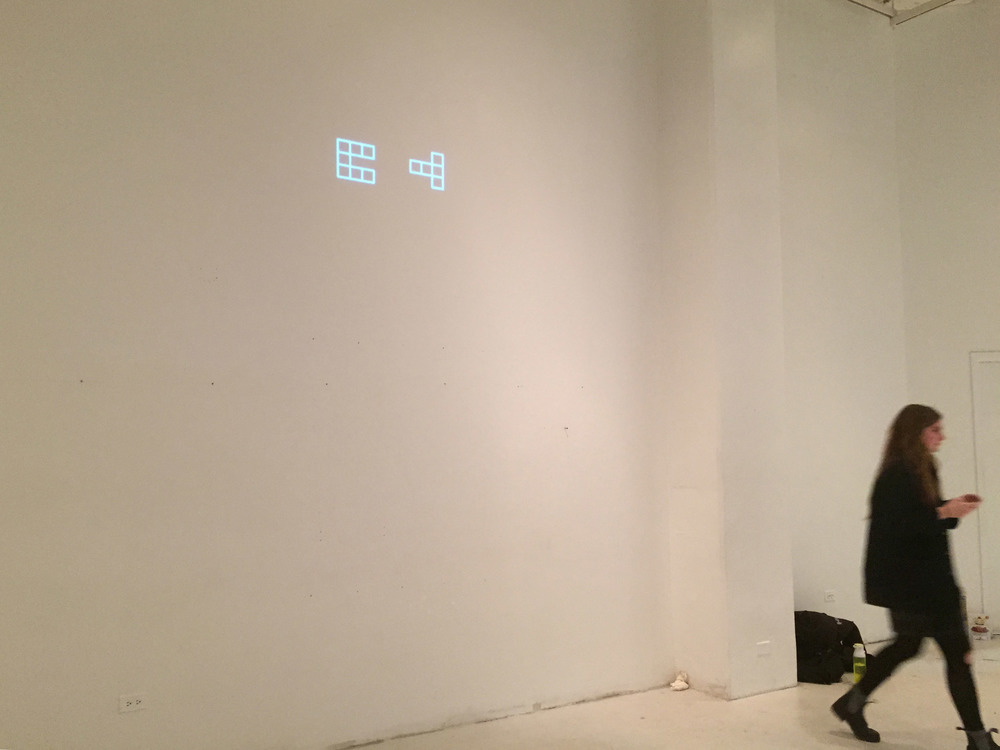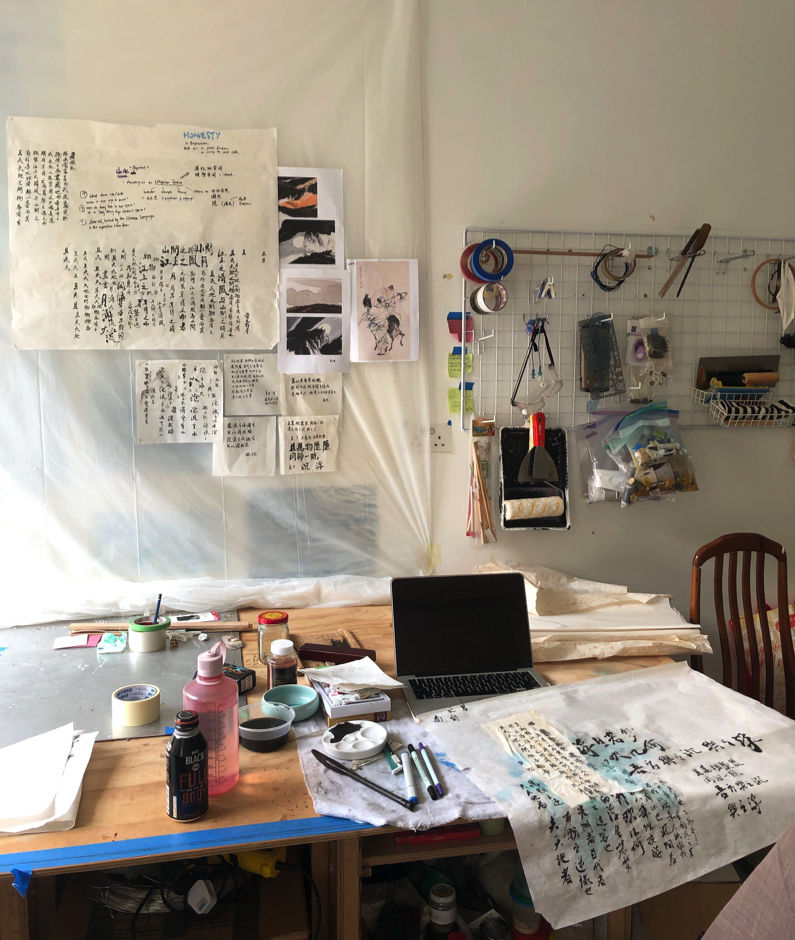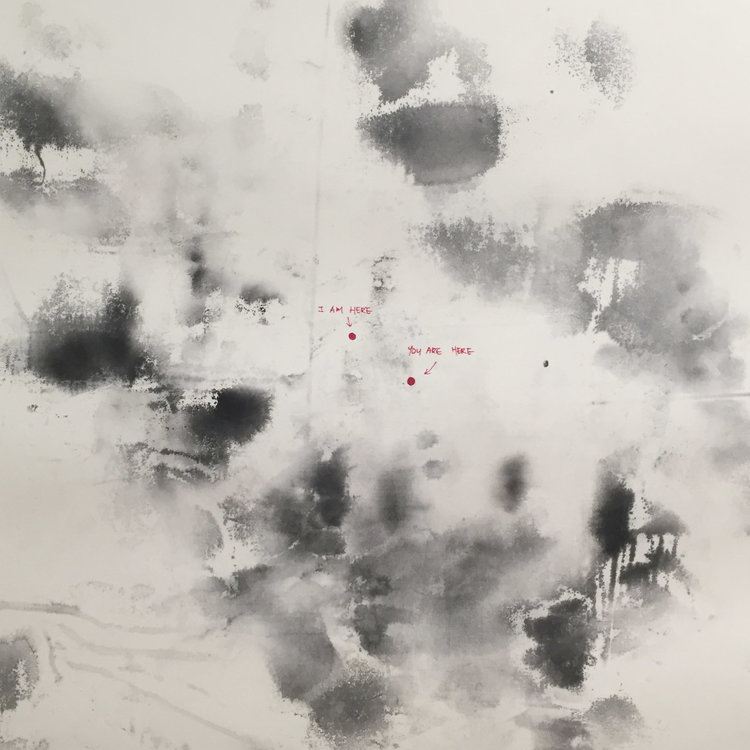Contemporary artist Tianyuan Bai is grounded in tradition via her medium of choice, Chinese ink, but she propels her practice into the future via modern technology and workshops.
I sometimes think of painting as a more “passive” art form. It demands a lot more initiative from the viewer – to ponder, to discover and make connections with what they see. In my current work, one question I have for myself is how can painting, especially in a traditional medium, be made more ‘active’ in engaging their audience.

At, Surrounding and In-Between (series) 2016, Ink on rice paper, 61cm x 61cm. Contemporary artist Tianyuan Bai.
Please tell us a little about yourself, what brought you to the world of art and how did you start?
I was born in 1992 in Heilongjiang during a cold winter and grew up on the sunny island of Singapore. I hold a BFA in art and technology from the School of the Art Institute of Chicago, and a MA (Dist) in the History of Art and Archaeology of East Asia from SOAS, University of London. As I have mentioned, I am a fan of the Chinese painting tradition and excited by the possibilities that new technologies can bring. I explore the intersection of these interests through my multi-disciplinary art practice. In April 2019, I opened my residential art studio, Neptune Court Studio, and have been sharing my love for Chinese art and art history through workshops, talks, social posts and writings.
What is the primary role of an artist? How do you describe yourself in the context of challenging people’s perspectives via your work and art?
I think artists play an important role in asking questions, opening up discussions and communicating with audiences beyond certain common boundaries, such as language, education and culture. In my own art-making, I seek to do these within the scope of my knowledge and interest – for now, mostly in Chinese ink and videos/light projections.
How do you deal with the conceptual difficulty and uncertainty of creating work?
I tend to take some steps back when I feel stuck, by going back to my favourite artists and artworks, or creating things that I simply enjoy rather than works that are conceptually loaded. Clues usually emerge out of these small exercises. Even if they don’t, I would have had fun in the process.

Tetris. Contemporary artist Tianyuan Bai.
Let’s talk about the evolution of your practice over the years. Tell us about your commitment to your current medium.
Chinese ink is the medium that I started with as a child at the age of six. During my growing up years, school exposed me to different methods of art making, and I’ve always been open to trying out different things. All this time, ink remains a material I feel connected to.
For my undergraduate fine art degree I pursued art and technology focussing on light installations and projections. I was intrigued by the possibilities that technology could bring, and wondered how these new methods of our time could be relevant to traditional medium like ink paintings. To understand that more, I pursued a master’s in East Asian art history and totally fell in love with the subject.
In my current creative endeavours, I wish to share my love for these old treasures through social media and workshops. I’d also like to continue navigating the intersections of my interest for the Chinese ink and tech-based art.
Let’s talk about your career or if you prefer artistic journey. What were your biggest lessons and hiccups along the way?
I love the way this question is phrased haha! My biggest learning is that art making is a long journey and I don’t need to call myself a full-time artist to make art. I realise that for myself, when making art is treated like a career, this mindset changes the way I approach my practice. For now, I’m comfortable with adopting more than one persona in my professional development, be it an artist, educator, or something outside of the visual arts.
How does your audience interact and react to your work?
I sometimes think of painting as a more “passive” art form. It demands a lot more initiative from the viewer – to ponder, to discover and make connections with what they see. In my current work, one question I have for myself is how painting, especially in a traditional medium, can be made more “active” in engaging their audience.
Who are your maestros? Whose journey would you want to read about?
I draw a lot of inspiration from Chinese dynastic painters who came up with very eccentric, funky images worthy of the word “contemporary” even for the art world of today. Some of my favourite names include Bada Shanren, Luo Ping and Chen Hongshou.

Contemporary artist Tianyuan Bai
How do you resolve the conflict between the creative and the commercial?
I too wonder how this balance is achieved, if at all.
What was your first sale? Do you handle the commercials yourself or is it outsourced to a gallery or an agent?
My first sale was at a huge annual Chinese art fair that I participated in as a secondary school student. The fair welcomed public entries from anyone who did Chinese painting and the fair organiser handled the administration. When I visited that exhibition with my parents, we were surprised to see a little red sticker on my write-up which indicated that the painting was sold.
What is the best piece of advice you have received? Why was it helpful?
My art teacher said this to me, “All you need to be is 60 per cent sure. The other 40 per cent drives you on.” I think this has given me a lot of courage to take a step forward, not just in art but many other decisions in life.

Studio view. Contemporary artist Tianyuan Bai.
Tell us about your studio.
My current space is tucked in an industrial building in Tai Seng. I work a lot from home too.
Are you more of a studio artist or naturally collaborative by nature? How do you feel about commissions?
Most of my works are done in the studio, but I love the way creativity sparks during collaborations, and hope to have more opportunities to do so in the future. I had an amazing experience with Indian artist Rajshree Gupta.
What are you working on now? What’s coming next season?
I’m now experimenting with projections and ink paintings.
For enquiries contact: tianyuan.bai@gmail.com
Before you go – you might like to browse our Artist Interviews. Interviews of artists and outliers on how to be an artist. Contemporary artists on the source of their creative inspiration.












Add Comment